How do you start a homestead? You don’t need to move to a farm to get started with homesteading. Anything you can do to develop more self-sufficiency, cut costs and live closer to nature will begin moving you in the right direction. Start growing your own food, learn to sew and preserve food and pick up other valuable skills.
In this article, you’ll learn what a homestead is and why you should start homesteading. Then we’ll walk you through the steps to get started, including planning, goal-setting, and the skills you’ll need to begin.
What Is A Homestead?

A homestead can mean different things to different people. But in a broad sense, homesteading is about living a self-sufficient lifestyle.
For most people, the main aspects of a homestead are owning their land and the buildings on it, and doing small-scale farming with the goal of being self-sufficient, or at least limiting their reliance on outside sources.
Although homesteading typically applies to farms, it’s also possible to be an urban homesteader by practicing sustainable living techniques, urban agriculture and a frugal lifestyle.
Some people believe that homesteading is more defined by the lifestyle choices that you make, rather than whether you live in the country or the city.
In the UK, what’s called homesteading is often referred to as smallholding. Or less frequently as crofting.
We’ll touch on exactly how to start a homestead step-by-step later in this article. But in its most basic sense, homesteading is about living off the land.
Homesteaders practice subsistence agriculture and often preserve their own food that they harvest to last them through the winter. So skills like canning and pickling are essential for homesteaders to have.
They may even produce their own clothing, textiles and other crafts. Either to use within their own home or to sell to generate a little bit of extra income.
Homesteading is differentiated from living in a commune or village because of its isolation, both geographically and socially. A homestead typically only houses a single family, or at most, their extended family.
Whereas a commune usually has a group of people living together who share responsibilities and possessions but are only loosely connected.
Homesteaders tend to live a more independent life, and may only venture into town once a week or less for supplies or to see friends.
This is particularly true for homesteaders who choose not to have a job and get all the income needed to pay for taxes and other expenses from work done on their own land.
Homesteads are far more likely to rely on renewable energy sources like wind or solar electricity than the average home.
In addition to growing their own vegetables and livestock, the idea of being completely “off-grid” is a massive appeal to a lot of homesteaders.
Imagine never having to pay another gas or electricity bill again! In some cases, electrical companies will even pay you for any excess electricity that you generate, which you can then sell back to the grid.
How To Start A Homestead – Step By Step
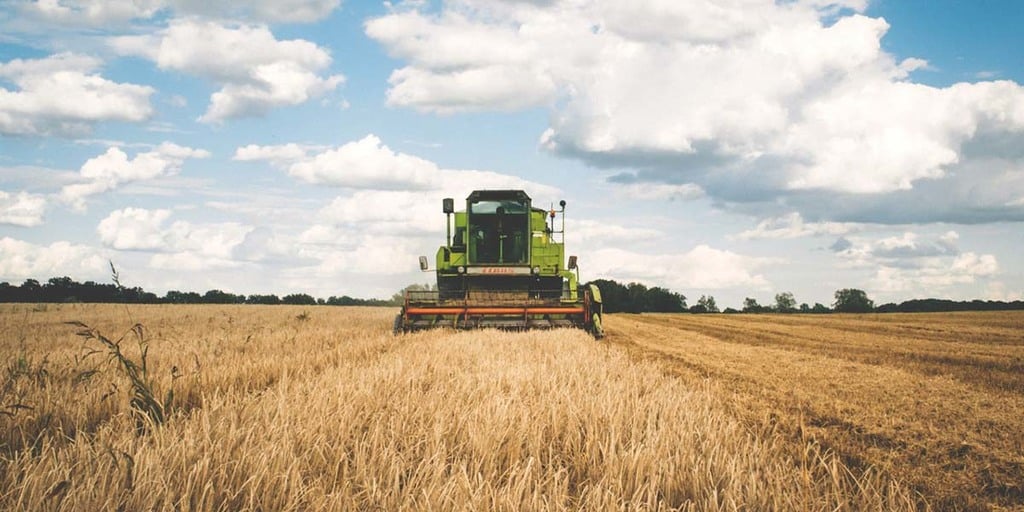
Moving from a typical modern lifestyle to being a homesteader is often a gradual process. You don’t have to sell everything and move to the country all at once.
A lot of people have a romantic and idealized dream of what homesteading would be like.
Step 1: Consider What Homesteading Involves
You should really stop and think about what the day-to-day activities and chores will be like if you decide to become a homesteader.
Taking care of crops and livestock, in particular, are time-consuming and physically demanding tasks, and not everyone is cut out for it.
If you have a spouse or partner, you also need to make sure they’re 100% on board, and that homesteading is the kind of life that both of you are looking for.
You’ll need to sit down and have open and honest discussions about what you’re looking for. If your partner hates the idea of getting their hands dirty, then living a homestead lifestyle will be very difficult for you.
You should spend hours and hours learning everything you can about homesteading before you decide to make any kind of commitment.
Don’t make a major homesteading decision without having all the facts and knowledge needed. Watch documentaries, read books and fully immerse yourself in the homestead mindset.
If you’ve got friends or family who already have a homestead of their own, see if you can spend a few days helping out to get a feel for what the lifestyle is like. And be sure to ask them lots of questions.
Step 2: Set Goals For Yourself
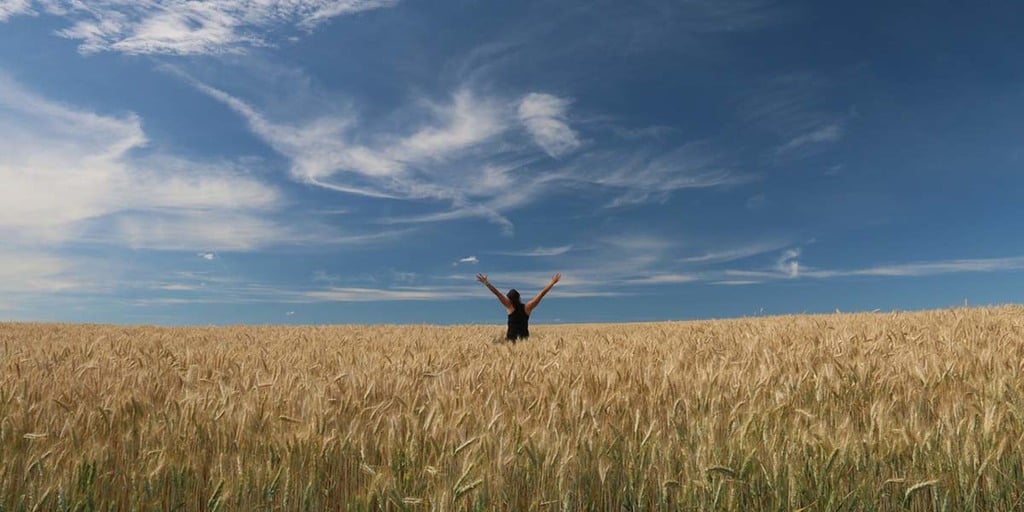
If you followed Step 1 and realized that devoting yourself to taking care of a farm full-time isn’t for you, that’s totally okay.
You can still practice homesteading and have a sustainable lifestyle without selling everything and moving to the country.
Even in an urban setting you can start a vegetable garden, get a few backyard chickens and begin preserving your own food.
You just need to sit down and figure out exactly what your goals are.
-
Do you want to reduce your carbon footprint by a specific percentage?
-
Do you want to live on grid, partially on-grid, or completely off-grid?
-
Do you want to raise livestock, have fruit trees, or other things that will require more land?
Once you know what you want, you’ll better know what your next steps will be.
Step 3: Decide Where You Want To Live
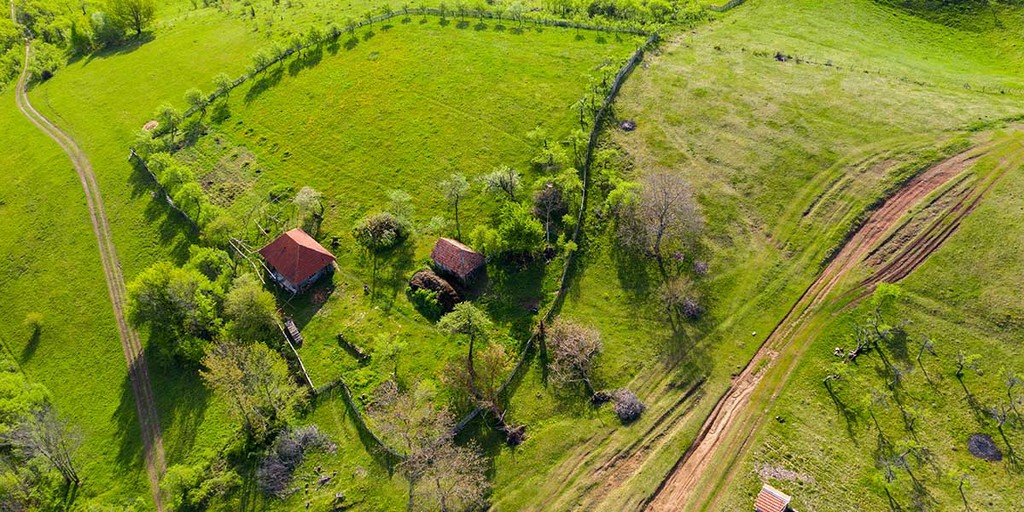
Your goals in Step 2 will help decide what size of a property you’ll need. If you plan to have a full-time or part-time job still and just do homesteading as a hobby, then you can probably get by in an urban or semi-rural environment.
If you plan to make homesteading your full-time job and lifestyle, you’ll need enough room to grow all the vegetables and fruit that you need, plus space for cows, sheep, or any other livestock you want.
In addition to figuring out how much land you need, you’ll also want to set parameters on the general area you want to live too.
Are you okay living in an ultra remote area, or do you want to be just outside of town?
Make sure any land you look at will actually work for the type of homestead lifestyle you’re trying to accomplish.
If you’re primarily looking to grow crops, then very sandy or rocky soil will make things more difficult, for example.
Don’t forget to factor in travel time. Do you really want to drive 1.5 hours every time you need to pick up something from the grocery store, or go to work every day (if you’re still going to have a job?)
Are you okay with the fact that it may take an hour for police or an ambulance to arrive in case of an emergency?
Even little things like needing to take a long walk down to your mailbox each day, or driving to your nearest post office once a week, may be more than what you thought you were signing up for.
Also avoid the temptation to bite off more than you can chew. You don’t need 100 acres, or even 10, to have the homestead of your dreams.
For a single family, 2 to 5 acres is often more than enough to provide everything they need. Anything bigger than that and you may find it’s just more trouble to maintain than it’s worth.
Some important homestead factors to keep in mind during the planning stage include:
-
Water access. Do you have nearby lakes, rivers, or ponds that you can use for water? Is there a well on the property? How much rainfall does the area get per year?
-
Land safety. You don’t want to live somewhere that’s prone to drought if you’re growing your own food, and you also don’t want to be near oil fracking sites or other potential health hazards.
-
Community. Sometimes the community you’re a part of is just as important as the land you buy. You will need to make friends and network with people in your area. If they have different religious or political views than you, it might be more difficult to fit in with the community, especially in a small village.
-
Shool. If you have kids, is there a school nearby? If not, you may need to homeschool them.
Step 4: Make A Budget

Having a thoroughly thought-out budget is critical for homesteading, particularly if you’re planning to give up a steady job to become completely self-sufficient.
If you’re buying land and property, it’s important not to use all your savings to buy it. Otherwise you won’t have any money left for renovations, improvements, equipment, or other necessary things.
As a general rule, you should expect any changes or improvements to your property will cost 50% more than you expect, and could take twice as long.
If you are giving up a job for a more self-sufficient lifestyle, you’re going to need to think of some ideas to generate income for yourself.
At a bare minimum you’re still likely going to need to pay property taxes, and potentially utilities as well as things like a phone or internet bill.
You’re also going to want to have some savings in case of an emergency, such as if your furnace breaks, or a family member gets sick.
It’s smart to have multiple streams of income from your homestead. You may try selling wool, milk products, extra produce, as well as things like soap making or other crafts.
That way if your crops all die or you find out there’s no demand for one income source, you have something else to fall back on.
Obviously you don’t want to spread yourself too thin. But it’s not all that uncommon for homesteaders to have 5 or 10 different products or sources of income.
Step 5: Start Small

You don’t need to wait until you have your dream farm to begin. You can start your journey into homesteading right away. Much of homesteading is a mindset and lifestyle, as opposed to where you live.
Whatever your situation is, even if you’re living in an apartment, you can start moving toward a more self-sufficient lifestyle this week.
If you have a sunny window, you can start growing your own herbs or lettuce indoors.
Got a large backyard that’s not being used to grow much besides grass and weeds?
Put in a garden or raised bed next spring and start growing a portion of the vegetables for your household. (Be sure to pick vegetables that you actually enjoy and want to eat regularly!)
Have a fireplace that you don’t currently use? Time to clean out your chimney and get some wood, and start using it to reduce your heating bill!
Over time you can gradually add more and more projects. Even if you only make one or two small lifestyle changes per year, things will really start to add up over time.
You could even start raising chickens or beekeeping in your backyard. Just be sure to check what your local bylaws are to make sure it’s allowed first!
Homesteading is all about what feels right for you. You can define your priorities and do things in whatever order makes the most sense to you.
For some people, self-sufficient energy may be a priority so they may want to invest in solar panels right away.
Other people may not mind paying for gas and electricity. Some people may want to start raising livestock right away for egg and meat production, while some people may choose to never go down that route due to ethical reasons.
Step 5: Continually Simplify Your Life
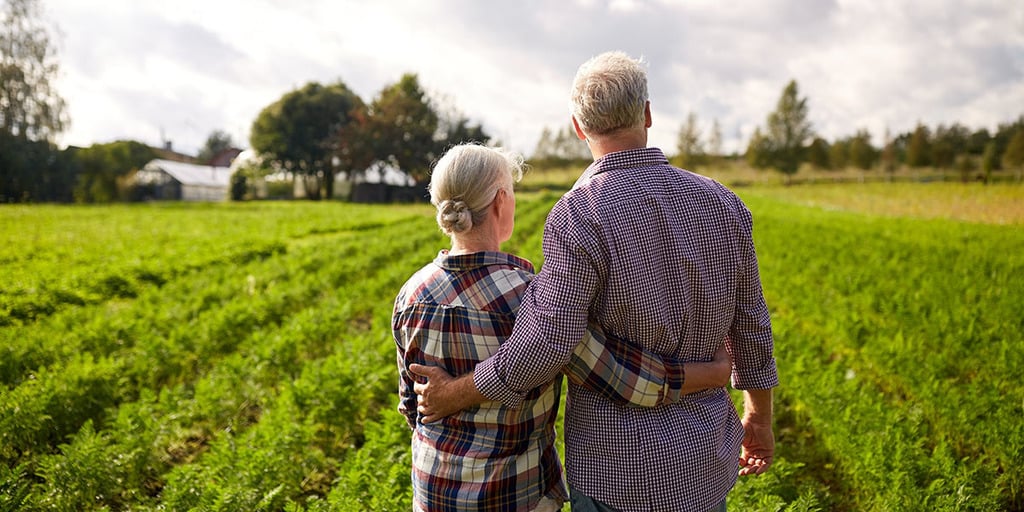
Homesteading often goes hand-in-hand with minimalism and living a more frugal lifestyle.
A big part of that is getting out of the cycle of always needing the newest and greatest phones, gadgets, trendy clothing, and other things that can suck money out of your bank account but not really offer much value.
For homesteaders, less is more, and there’s usually a cheaper and better way to do something.
You should be continuously taking an audit of your life to see what things are draining your money, time, and energy, and seeing if you can reduce or completely eliminate them from your life.
Adding homesteading to your lifestyle will often require taking some previous things out. Some things might be obvious.
Like if you’re now doing physical activity on your homestead of hours each day, you can probably cancel your gym membership.
Other things may be more subtle and take more insight to figure out how to reduce or remove them from your life.
Step 6: Learn To Preserve Food
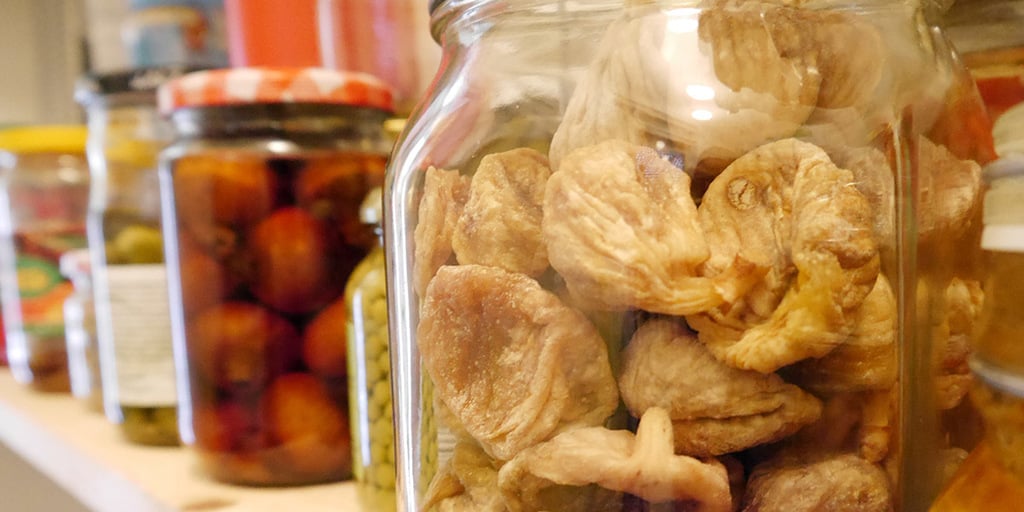
There are a ton of different ways to preserve food, but the idea of food preservation in general is becoming a bit of a dying art.
Even picking up one food preservation skill like canning, pickling, freezing, cold storage, dehydrating, or smoking can help cut down on your food costs.
If you’re growing your own fruits and vegetables, then learning to preserve food is an absolute must.
You’re likely going to have far more food at the end of the season than you know what to do with. And if you can’t preserve it, then most of it will end up going to waste.
You’ll need to find a way to keep your produce from spoiling so that you can keep your family fed all throughout the winter months.
Even if you don’t grow your own food, learning to preserve will allow you to buy food in season when it’s cheapest and most ripe, and continue eating it all year round.
You probably know someone who has some extra canning supplies that you can borrow just to try it out.
Even if you need to buy your own canning jars or a food dehydrator, they will often pay for themselves within the first one or two uses.
Starting to use cold storage is as easy as finding a cool, dark place in your basement or under your home where you can store things.
Step 7: Make Friends With Other Homesteaders
Homesteading is often associated with hermits or people who aren’t very sociable. But the truth is that many homesteaders are very friendly and eager to share what they know with anyone who’s interested.
Having a homesteading buddy who is more experienced than you can really help if you have questions or concerns at any step along the way.
They’ll know about the weather, growing conditions, laws, and lots of other useful information that you’ll need, because they’ve likely been through it all themselves already.
And don’t discount having the moral support and someone who lives the same lifestyle as you being there, when everyone else is telling you that you’re crazy.
Networking with other homesteaders makes sense from a material perspective too. If you’ve grown too many peppers and your friend has too many eggs, then it’s easy to barter for what you need.
Or you might even set up long-term arrangements with other homesteaders to trade for food and supplies that you don’t necessarily want to produce yourself.
You might only need a plow once per year at the start of the season, and it could make more sense to just borrow it from a neighbor as opposed to buying one for yourself.
Step 8: Start A Garden
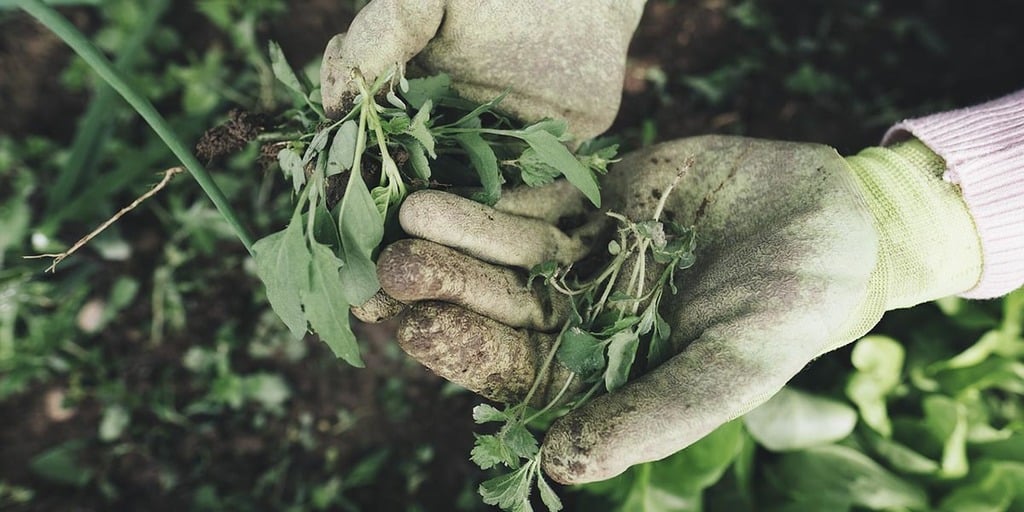
If you’ve made it this far and you haven’t started a garden yet, just do it!
Gardening doesn’t have to be expensive. In fact, all you really need is a few dollars for some packs of seeds. Dirt, water, and sun are all free and are really all you need to get started.
You might not get the same yield as someone who uses fertilizer, but most vegetables will grow in almost any type of soil with just a bit of love and care.
If you don’t have any land of your own yet, sign up for a community garden, or even borrow a bit of land from a neighbor or friend.
Most people are happy to let you use some extra space they aren’t using in exchange for some free vegetables later in the season.
- Learn more about Starting A Market Garden Beginners Guide to learn how to make money on your garden.
Step 9: Compost
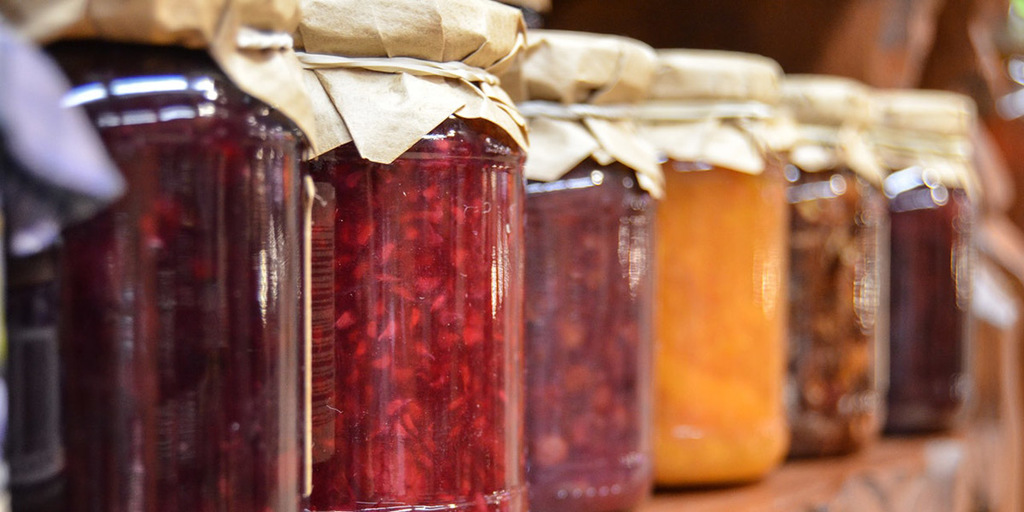
Composting and gardening go hand in hand. Even if you can’t afford fertilizer or premium soil at first, after your first year of composting you’ll be making excellent nutrient-rich soil of your own.
It doesn’t take much effort to throw all your food scraps, leaves, chicken manure, and extra plant matter from your garden into the compost. It’s also hard to do it wrong.
Just let everything decompose and turn it over once and a while, and you’ll have free soil to put back into your garden in no time.
Step 10: Learn To Sew and Mend Clothes
While you’re working on your homestead, you’re likely to start wearing out your clothing while you’re tending to your vegetables or livestock.
If you get a rip in your jeans, you could just throw them out and get a new pair. But being a homesteader means being more sustainable than that!
For the cost of some thread, you can repair your own clothes and get months or years more out of them.
A sewing machine will make things faster and easier, but it isn’t necessary. With just a needle and thread you can repair and hem clothes to make them last significantly longer, and save a lot of money in the process.
Step 11: Learn To Build and Repair
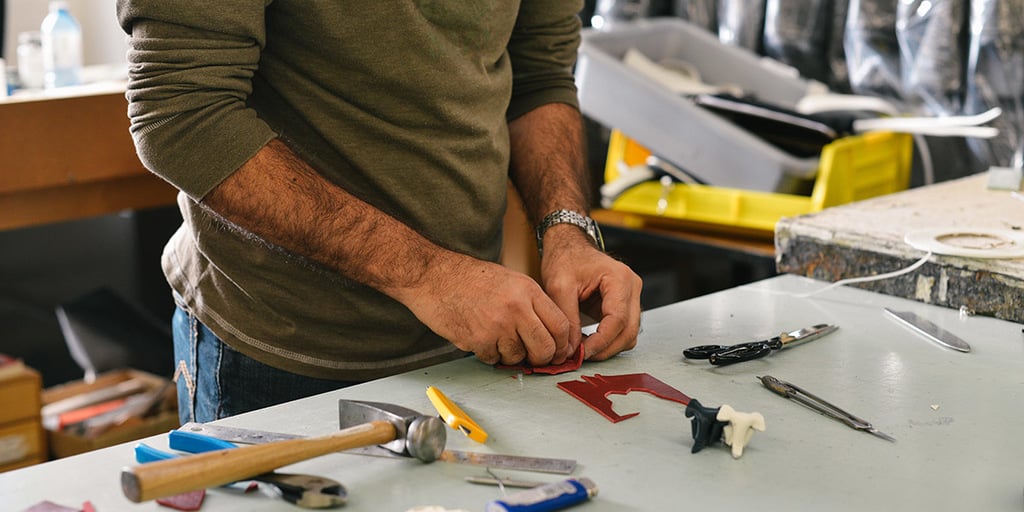
Sewing is a good start in terms of learning to repair and extend the life of clothing that you own. But you’ll want to expand your knowledge into other skills such as carpentry as well.
You don’t need to become an expert carpenter, but you want to be a decent enough handyman that you can fix things around your homestead if they break, without having to always call someone else in.
Your solutions don’t need to be pretty, but they need to keep things working.
Building things like tables, cabinets, or even a barn yourself will save a lot of money if you’re able to do it.
How To Create a Permaculture Homestead

Permaculture is another way of saying “permanent agriculture.” It’s different from conventional agriculture since it works more with the natural forces of your environment.
It takes the wind, water, sun, natural vegetation and wildlife, and other factors into account. Basically it’s a more holistic approach to growing fruits and vegetables.
On a conventional homestead, you may have a monoculture. That means growing a single crop, like corn or wheat.
That can make your crop more susceptible to pests and harmful organisms, it reduces biodiversity, and can also damage the health of your soil.
On a permaculture homestead, emphasis is put on observing and appropriately interacting with your land in a way that makes sense.
Permaculture homesteaders value and use diversity, instead of shunning it. They’re more likely to take an integrated approach and take advantage of multiple types of crops or livestock that work well alongside each other.
Some permaculture farms go further and produce no waste, while others do their best to re-use and value renewables, and reduce their dependency on more scarce resources.
Most often permaculture farms are organic and don’t use pesticides or other harmful chemicals either. They catch and store energy such as rainwater or sunlight where it’s abundant.
Most small homestead farms will naturally tend toward a more permaculture style of production.
But I would urge you to consciously try to make a permaculture homestead, as it will benefit both you, your food production, and the environment as a whole.
Learn more about permaculture gardening techniques, tips, and more:
- Read about How To Start A Permaculture Garden at your own.
- Learn How To Create A Permaculture Orchard.
- Complete Guide To Online Permaculture Design Courses.
How To Find Land For A Homestead
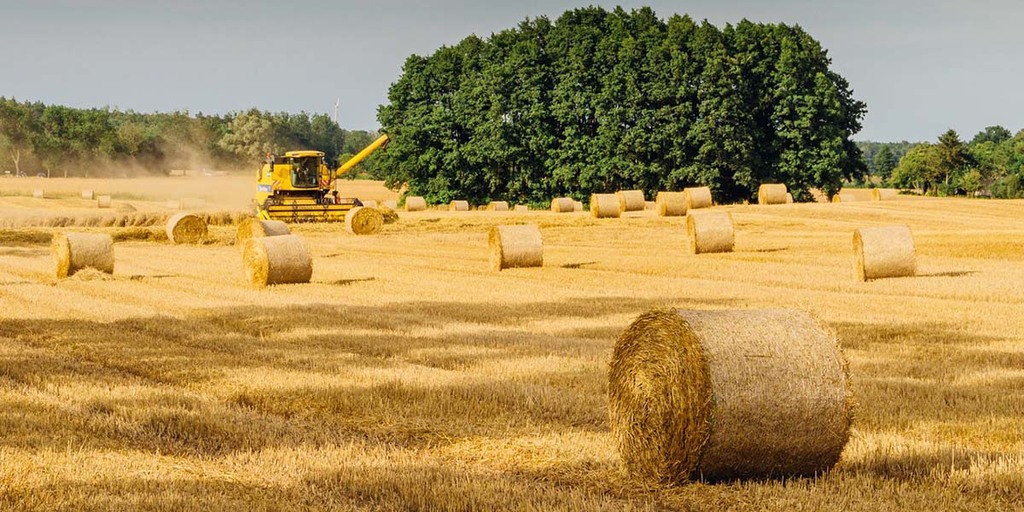
Nowadays using the internet, finding a nice piece of land to establish your homestead on is easier than ever. What can be hard is sorting through all of the real estate listings to find what you really want.
Before you even begin looking for a homestead, I would recommend checking with your bank to make sure you are approved to get a loan.
Having a preapproval letter in hand will help you to know exactly how much you’re able to spend on a property, and can streamline the negotiation process.
Some things to consider in your search for the perfect piece of land include:
-
Property Rights. Would you own the mineral rights and water rights for the property? Don’t assume when you’re making an offer. Check the deed for any restrictions, rights of way, or easements that could prevent you from fully using your land.
-
Acreage. It might seem like you want as much land as you can afford. But more isn’t necessarily always better. You don’t want more land than you can maintain. Wooded land is ideal since it doesn’t need to be maintained like a pasture does, and you can either use the firewood for heat or sell it for some extra income.
-
Water. Ideally, you want at least one natural water source like a pond or creek that doesn’t run dry seasonally. That way you’ll always have access to water.
-
You also want to know the age and condition of any existing underground well on the property, as drilling a new one can cost upwards of $10,000.
Common Homesteading Activities
Here are some common homesteading activities to let you know what to expect day-to-day.
-
Sustainable energy generation
-
Keeping livestock (chicken, goats, pigs, cows, bees, etc.)
-
Preserving and canning
-
Fishing and hunting
-
Maintaining tractors and other equipment
-
Chopping firewood and forestry
-
Producing milk products like cheese and butter.
Why Should You Start A Homestead?

Homesteading has a number of legal and financial benefits, as well as the potential to increase your quality of life and satisfaction.
1. Homestead Exemptions
In some US states, homesteaders can make use of something called a homestead exemption. This allows homeowners to protect the value of their home and land from creditors and taxes.
This benefit also transfers on to a spouse if the homeowner dies. Homestead benefits are for the life of you and your spouse, as long as you continue to occupy the homestead property.
That means homesteading can potentially give you something called forced sale immunity. That means creditors can’t force you to sell your home to cover your debts if you default on a loan or other debt.
However, this usually won’t protect you from specific types of debt like defaulted property taxes or a mortgage foreclosure.
Some states allow your entire property to be exempt from property taxes. In other cases, you’re shielded up to a specific amount, such as the first $50,000 or $75,000 of your home’s assessed value.
Since homestead exemptions vary so much from state to state, you should consult a lawyer or accountant before making any financial decisions related to your homestead.
2. Security
Having the title to your land and home gives many homesteaders a greater sense of security.
With minimal costs and expenses, and the ability to be self-sufficient and live off the land, homesteading can provide you with a feeling of safety.
By living the homesteading lifestyle, you’ll naturally have lower bills.
Homesteaders tend to make lower income, but since they have much lower expenses they may not even need to work a conventional job.
3. Pride
Homesteaders take pride in having a piece of land to call their own. Most couldn’t imagine renting a tiny apartment, and prefer to have their own land where they can provide for their family.
4. Less Stress
Like most people who live in the country, homesteaders report experiencing a lot less stress than those who live in loud and busy cities and urban centers.
Imagine your home being surrounded by the sounds of birds chirping and livestock, instead of busy traffic and police sirens.
5. More Environmentally Conscious
Homesteaders have a closer relationship to nature than those who live in the city. They know where their food comes from, because they often grow most of it themselves.
As a result, they naturally have an incentive to care more about the environment and make sure their agriculture practices are sustainable.
That way their land will continue to support them for the rest of their lives, and hopefully the lives of their children as well.
6. Better Physical Health
Running a homestead requires a lot more physical labor than an office job, or most jobs in the city for that matter.
Combine that with the fact that homesteaders typically eat healthy nutritious foods they make themselves, and have much less opportunity to indulge in processed foods like pizza or chips.
Lower stress, regular physical exercise, and a healthy diet are all strong factors in staying fit well into old age, and living a long life.
7. Increased Self-Confidence
Starting a homestead will require picking up a whole set of new skills and hobbies that you never had before.
These new skills will make you more capable and self-sufficient. And as a result, your confidence in yourself and self-esteem will probably rise dramatically.
Homesteading isn’t easy. In fact, there’s a steep learning curve to learn all of the new skills you’ll need. It can be challenging and even overwhelming at first. But many of these challenges will help to grow you into a stronger person.
It’s a very empowering feeling to know that you’re self-sufficient and completely in control of your own destiny.
For many homesteaders, society and the electric grid could disappear tomorrow, and they’d still be able to continue on enjoying exactly the same lifestyle.
8. Family Bonding
Homesteading can bring your family closer together. Imagine not having to go work at a job all day any more.
Instead, you can spend your day doing chores and taking care of your property alongside your spouse and kids.
That means a lot more opportunities for chatting and getting quality time for each other.
Homesteading won’t magically create the perfect family. You’re still likely to have disagreements and time when you want your own space.
But a family that spends time together during the day and sits down to enjoy a meal together when it’s all said and done is likely to be closer to one another because of it.
What Is The History of Homesteading?
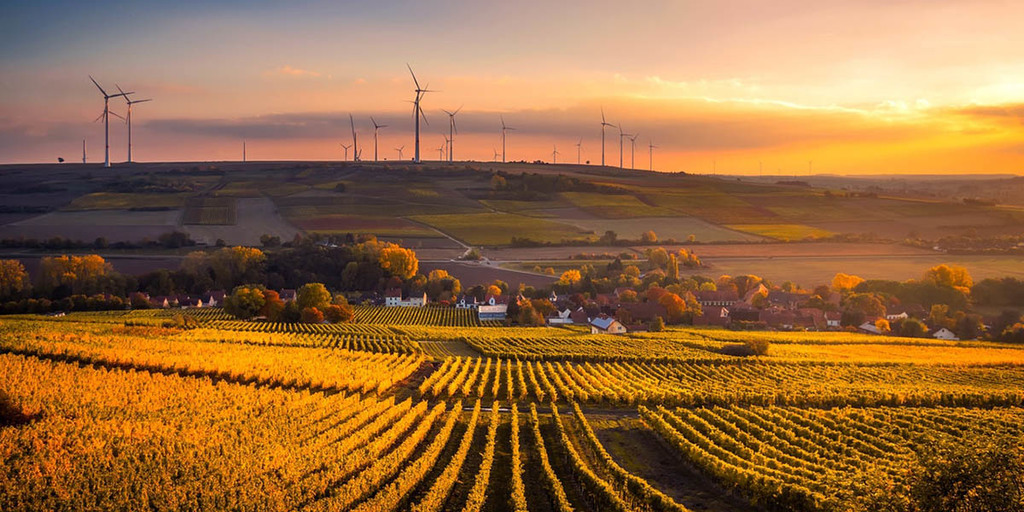
In the United States, the Homestead Act was signed into law in 1862 by President Abraham Lincoln.
This Act provided the ability for settlers to get 160 acres of public land for free, as a way to encourage people to migrate further into the Western United States.
To obtain your land under the Homestead Act, you simply had to pay a small fee and live continuously on your land for five years. After that point, the US government would transfer you full ownership of the property.
All land and the buildings on it are exempted by a homestead law that prevents the property from being seized or sold to cover debts, as long as the owner is occupying it.
Can I Get Free Land Through Homesteading?
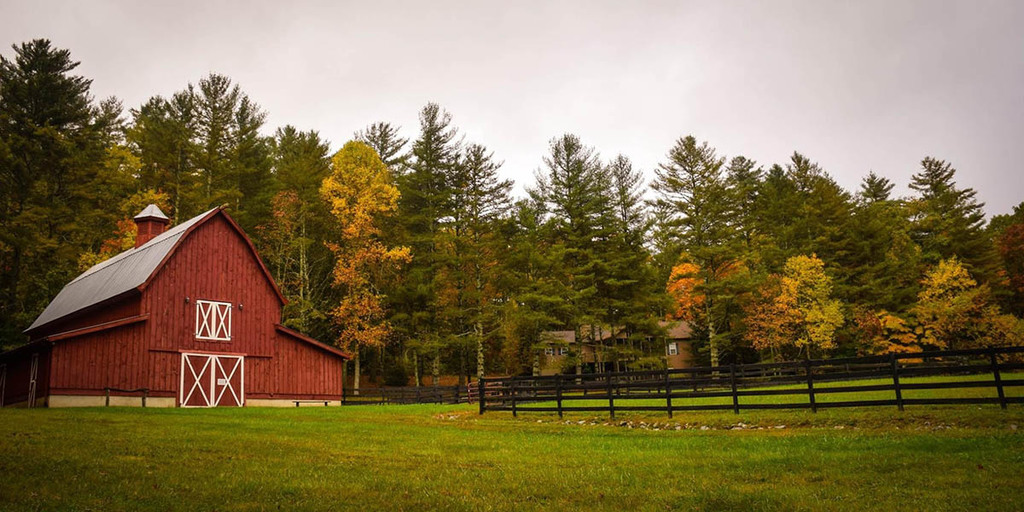
Surprisingly, yes! Many US states still offer the option to own land for free through the Homestead Act or similar programs. The main downside is that you’ll need to move to small remote towns in places like Alaska or Montana.
Nowadays, don’t expect to get a huge hundred-acre plot of land for free, though.
Most commonly today, you’ll only receive a lot in part of a subdivision, and there may be specific provisions. For example, you may be required to build your own house within a year of receiving the free land.
This means you’ll need to apply for a homestead with proof you have the funds to build a home, as well as a proposed design or floor plan.
You may be on the hook for extra costs such as paying the community to develop streets, sewers, and water for your property as well. So make sure that you read the fine print before signing any deals.
If you’d like to live in New Richland, Minnesota, here is where you can apply for free land. Or if perhaps you’d like free land in Nebraska, check out this link instead.
If you start searching, you might be surprised by how many US states offer the ability to get free land, as long as you have a bit of flexibility regarding where you live.
Unfortunately, you likely won’t have as much luck finding free land to start your homestead outside of the United States.
In Canada for example, homesteading is pretty much a thing of the past. Almost all land that isn’t privately owned is considered Crown land which is owned and managed by the Canadian government.
It’s certainly possible to purchase remote land in areas of Canada such as the Yukon at reasonable prices for agricultural purposes, but getting land for free is pretty much out of the question.
Similarly in Australia, it’s difficult to get land for free. But you may be able to buy remote land for extremely low prices. As low as 20 cents per square meter in some cases.
In the UK and European countries, land is at a premium and the idea of it being given away for free is practically unheard of nowadays.
While you can certainly buy land in rural areas for a lot cheaper than in major cities, don’t expect it to be free!
Frequently Asked Questions
Q: What states allow homesteading?
A: Most states allow homesteading to varying degrees. My top choices for homesteading in the United States are Idaho, Western Virginia, Tennessee, Oregon, and Missouri.
Q: Can you be self-sufficient on 1 acre?
A: On an acre of quality land you should be able to provide most of the food that a small family needs. But it would be tough and would require a lot of work to keep it producing at peak capacity.
An acre isn’t enough for pigs or cows, in terms of livestock it can only support a small flock of chickens, two goats, and a large garden. 5 – 10 acres would be more comfortable for living completely self-sufficient.
Q: How much does it cost to start a homestead?
A: Expect to spend at least $250,000 to set up a small homestead including purchasing a home with ample land, equipment, farm prep, etc. You will have an ongoing cost of about $20,000 per year in terms of property tax, healthcare, utilities, vehicles (gas, insurance, repairs), animal feed, and more.
Conclusion
Homesteading is growing in popularity year over year and many people see it as an ideal and romantic lifestyle. But it’s not for everyone.
If you’re willing to put in the effort and hard work, it can be a very rewarding way to live though.
Homesteading is a mindset and way of life, and you don’t necessarily need to live on a farm to get started.
By gradually becoming more self-sufficient and simplifying your life, you can slowly move step-by-step toward your ultimate goal of living the life of a homesteader. And after you’re all set up, you can begin to make money homesteading.
Be sure to check out some of our other articles on agroforestry, food forests, and regenerative agriculture for more information.
